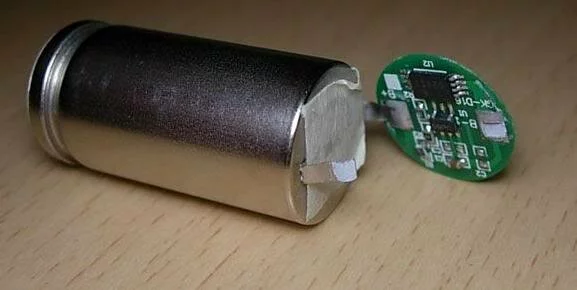There are so many batteries for flashlight in the market. Some of them are rechargeable and other is not. In this post, I show you two kinds of popular batteries, the pros and cons of each. I focus on Lithium batteries because it has high efficiency and so many flashlight brands choose it.
Alkaline Batteries
This is popular battery because of the low price high capacity. They have several different kinds of shape for example: AA, AAA, C, D. With flashlight, it is used AA or AAA types and its capacity is about 2700-3000 mAh, voltage source is 1.2 to 1.5V. The distinct advantage of alkaline battery is the consumptive power change by time is less. It is only 0.3% per month so you can store it for long time. It used well for devices which using less power as radios, digital clocks, led flashlight, etc.
The alkaline battery has two types are unchargeable and rechargeable. The popular rechargeable alkaline batteries are Ni-CD and Ni-MN.
Ni-CD (Nickel Cadmium): it has rechargeable time is large up to 1000 times. However, the downside is memory effect that cause to reduce battery life quickly if you use it by misuse such as charge for short time, turn off charger is very suddenly, charging when energy of battery is still high. The right method use Ni-CD battery is that you have to completely used up its power or deep discharge battery before recharge again. Most of high quality batteries chargers have discharge function and then recharge when battery energy is lowest. Notice that Ni-CD is toxic waste so be careful!
Ni-MN (Nickel Metal Hydride): It is just same as Ni-CD battery characteristic but its capacity is larger than Ni-CD for two times. The memory effect is less then Ni-CD too so you can charge it any time you want without discharging before but do not misuse it because it cause damage your battery. In addition, charging for long time (overcharge) will produce high temperature that caused short battery life. The high quality chargers from Sanyo Eneloop, Panasonic Elvota, GP Recyco +, Sony… are always built-in many functions such as discharging, overcharging that help your battery is durable, long life and safety.
Lithium Batteries
Lithium batteries used in many smart devices as smart phone, PDA, camera, laptop, flashlight, etc. It contains larger energy in the same capacity than alkaline batteries and the price is higher too. Below is some lithium batteries types are popular on the market.
Lithium (Un-chargeable): It is lithium battery but it is un-chargeable. The benefits of it can work well at low temperature, lightweight, large capacity and long time operation. The cons are high price. If you don’t care about price and charger, I think un-chargeable lithium battery is good choice.
Lithium-lon (Li-lon) (Rechargeable): It used very popular on the high quality flashlights. The voltage of each cell is 3.7V. It has many kinds of shape as AA, AAA, CR123A. Normally, Its name will be named by according to the size such as: AAA: 10440 that meant 10mm x 44 mm x 0 (0: cylindrical shape).
One of advantages of it that hasn’t got memory effect. You can charge any time, any state of full or little energy and can disconnect to charge any time without waiting to full charging. The downside is very easy to fire and explode if you get overcharge (over 4.2 volt) or operation temperature is over 60 oC. Try to avoid disadvantages, many producers built in short-circuits protected on the Li-Ion battery, which will stop when charging over 4.2V and getting heavy load under 3V.

Lithium Li-Ion batteries don’t require full charging for long time storing. For instance, with 40% full charge, you can store it in 12 to 18 month at 0 to 25 oC (higher temperature will reduce the storing time). Li-Ion get standard lifespan is about 2 to 3 years that is commensurate with 200 to 300 times of charge and discharge cycle.
Lithium-Polymer (Li-Po) (Rechargeable): It has all characteristic of Li-Ion about using, charging, discharging, store, etc. It uses new technology that meant it is lightweight, largest and highest capacity, easy to produce with many shapes. Because of high price so I can’t see it on the flashlights.
Conclusion
Rechargeable batteries are more expensive then unrechargeable from about five to seven times. In additional, the price for investing a charger about 5$ to 20$ but you can use it at least 300 to 1000 charging times if you get quality rechargeable batteries. Method of measurement of number of charging times is commensurate with the battery lifespan at 70% – 80% capacity. If you use flashlight frequently, in the longer-term the benefits of rechargeable battery is higher than unrechargeable battery.
See more in this Category
- Understanding about CR123A Rechargeable Battery for Led Flashlights
- Understanding about 18650 Battery for Led Flashlights
- What You Need to Know in Choosing the Best & Brightest Flashlight
- Led Flashlight Care and Maintenance Videos
- Basic Knowledge About Led Flashlight Bulbs
- Flashlight Switches – Its own Advantages and Disadvantages
- Basic Knowledge of Batteries for Led Flashlights